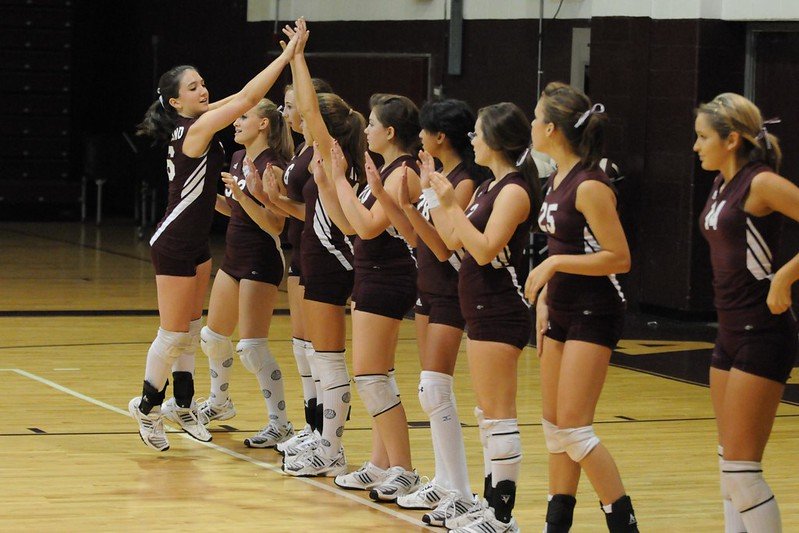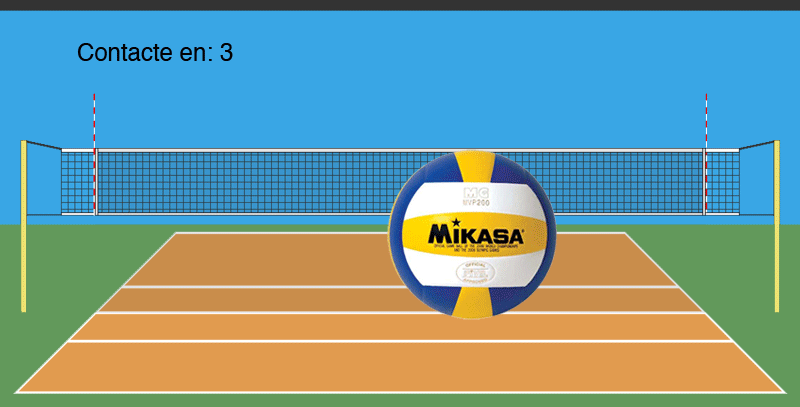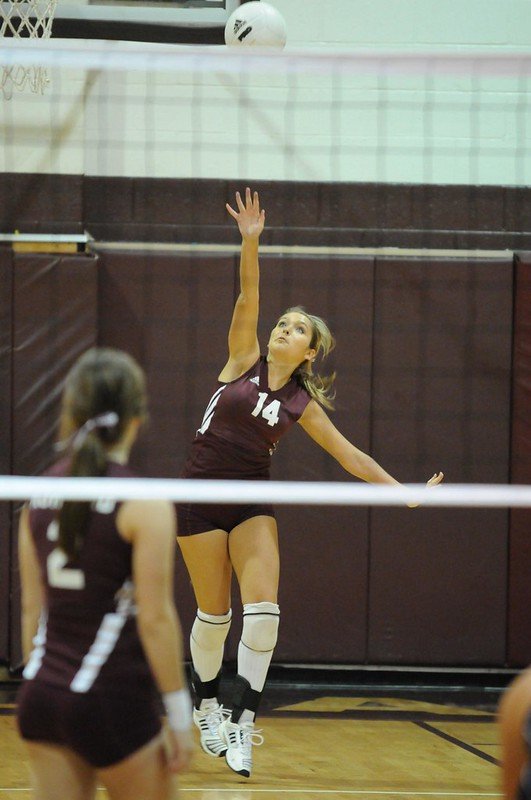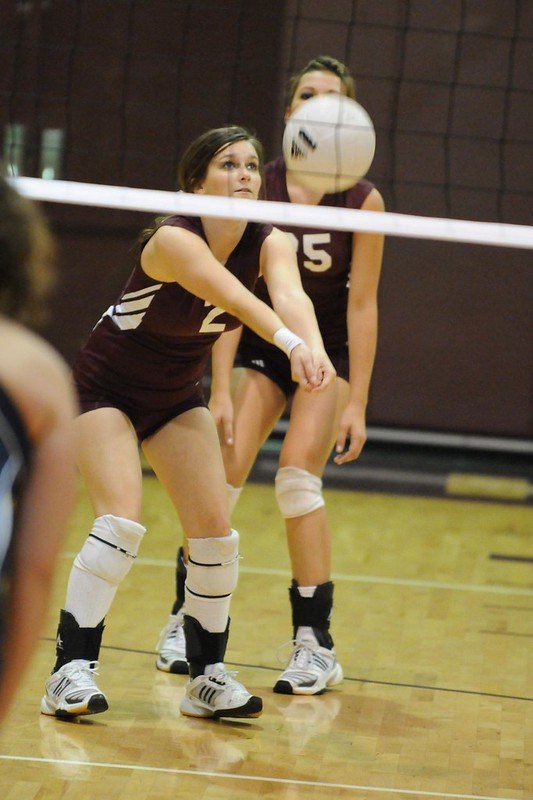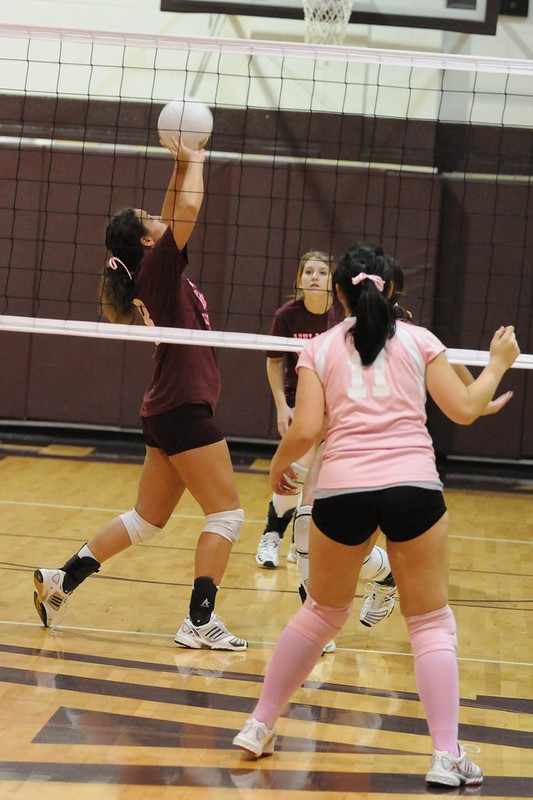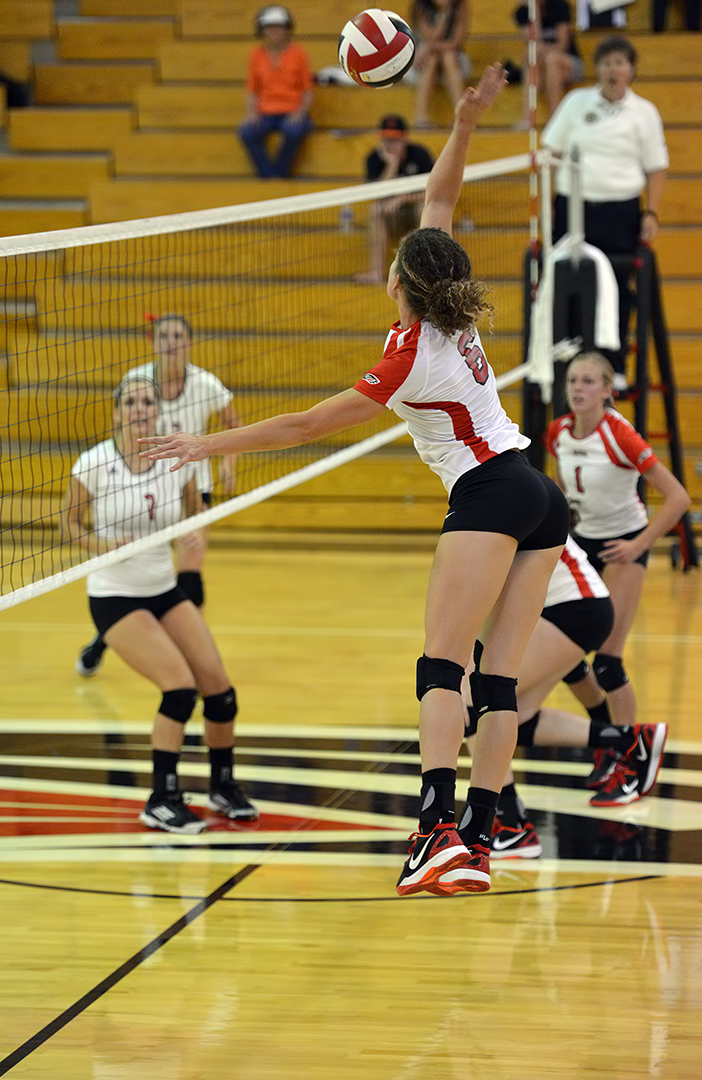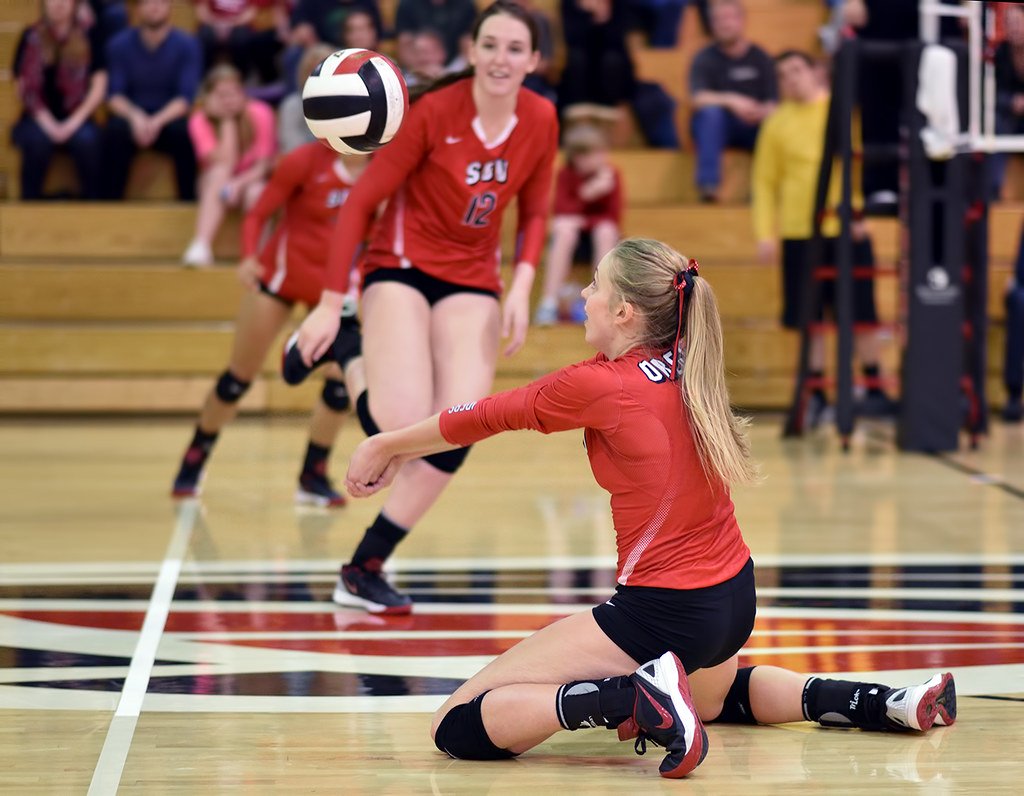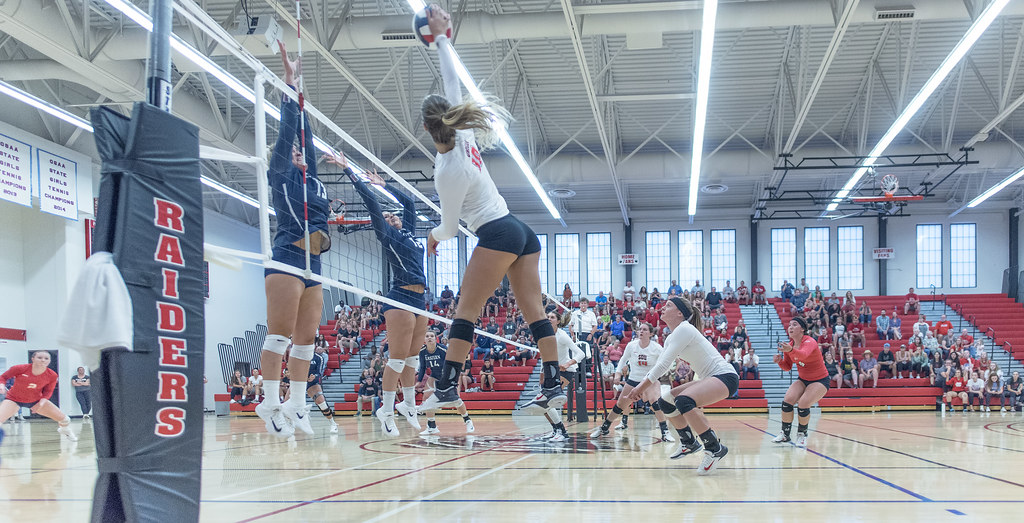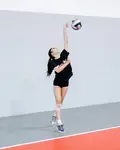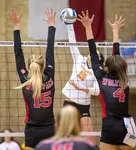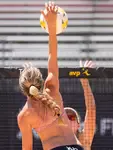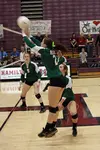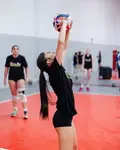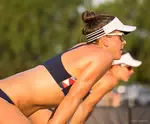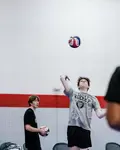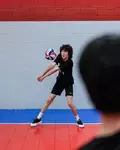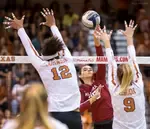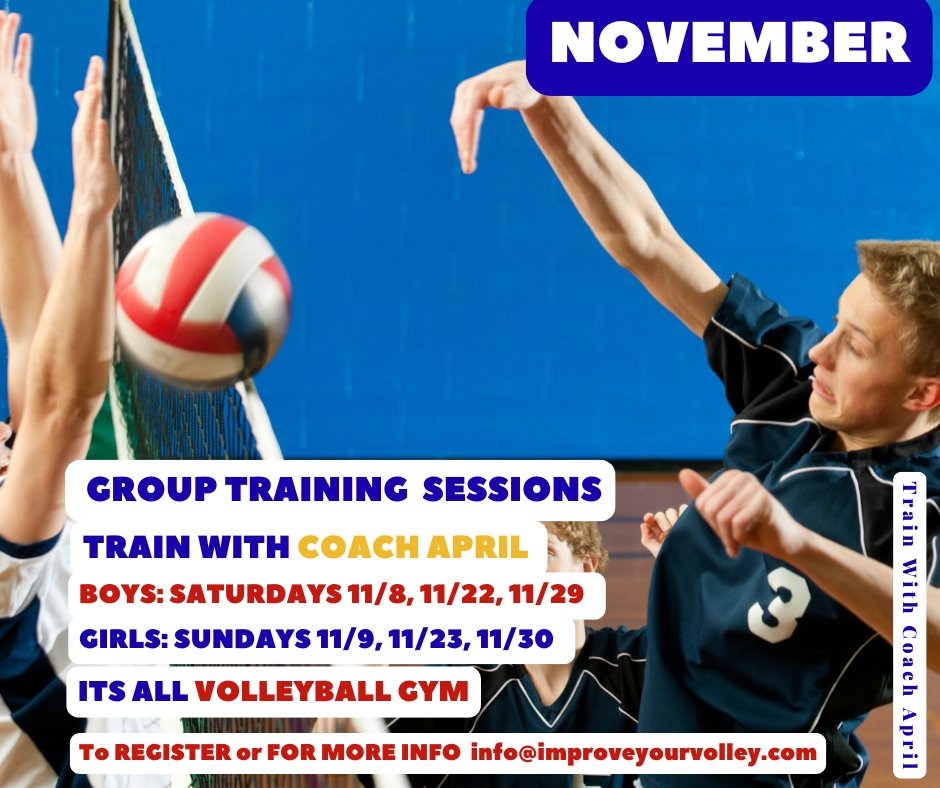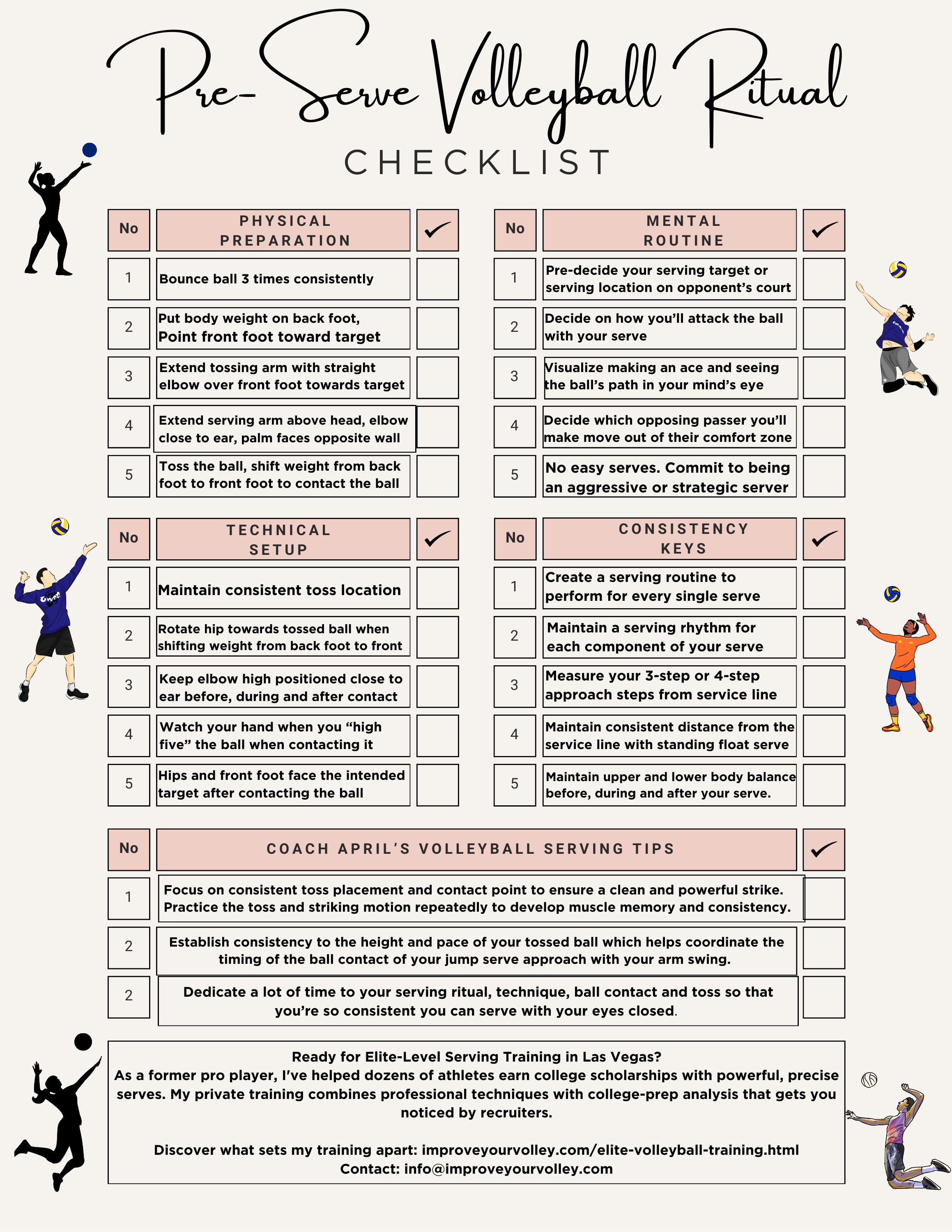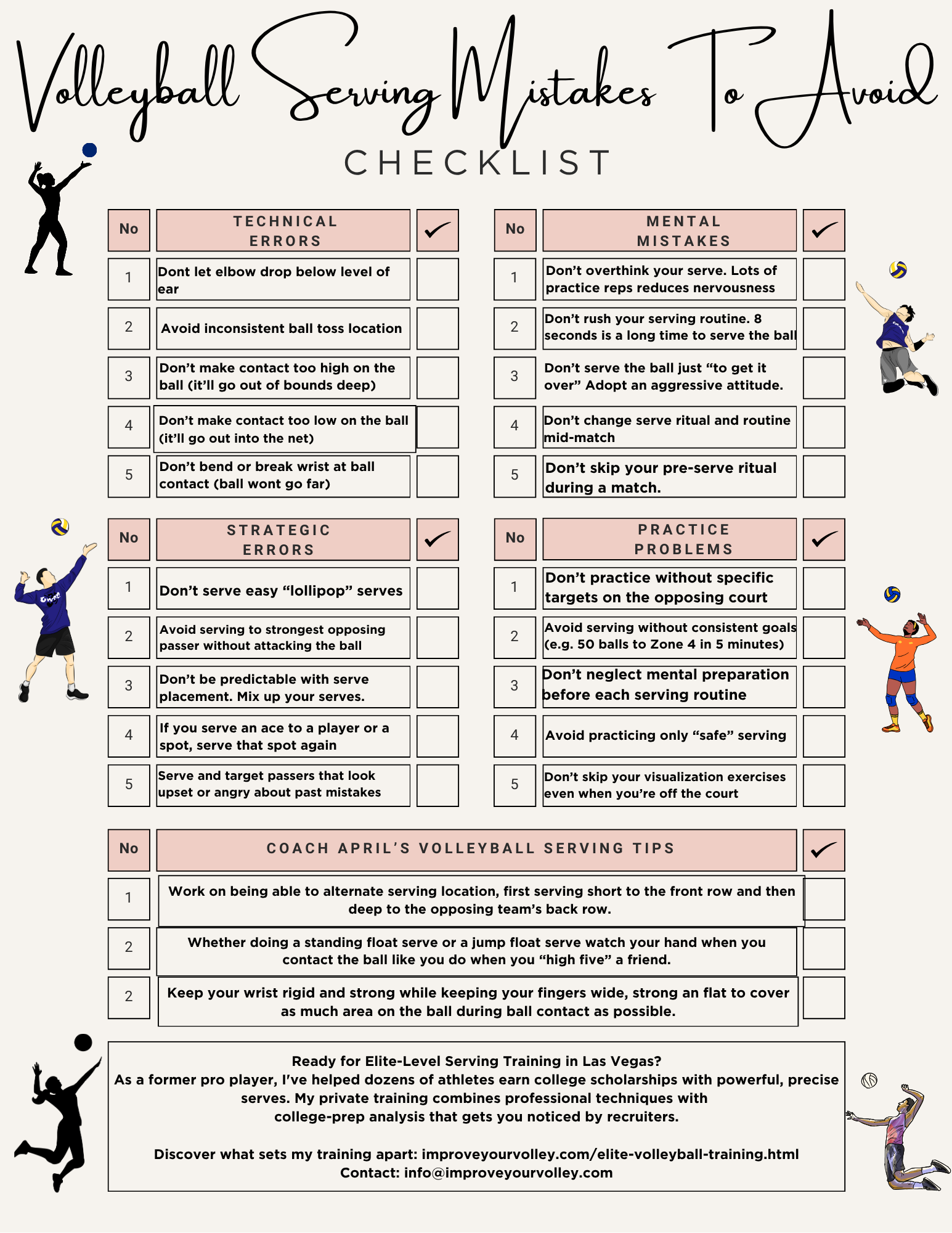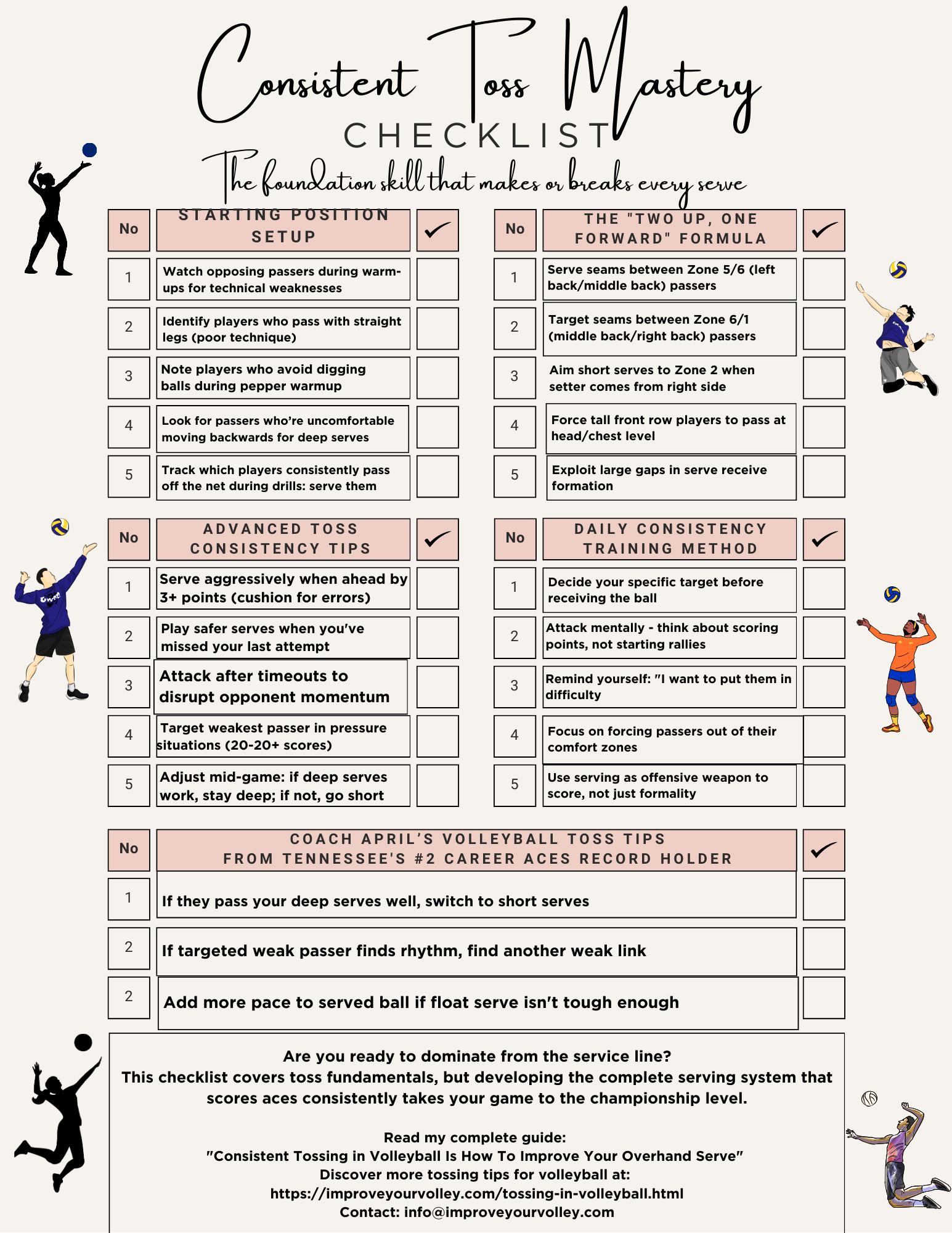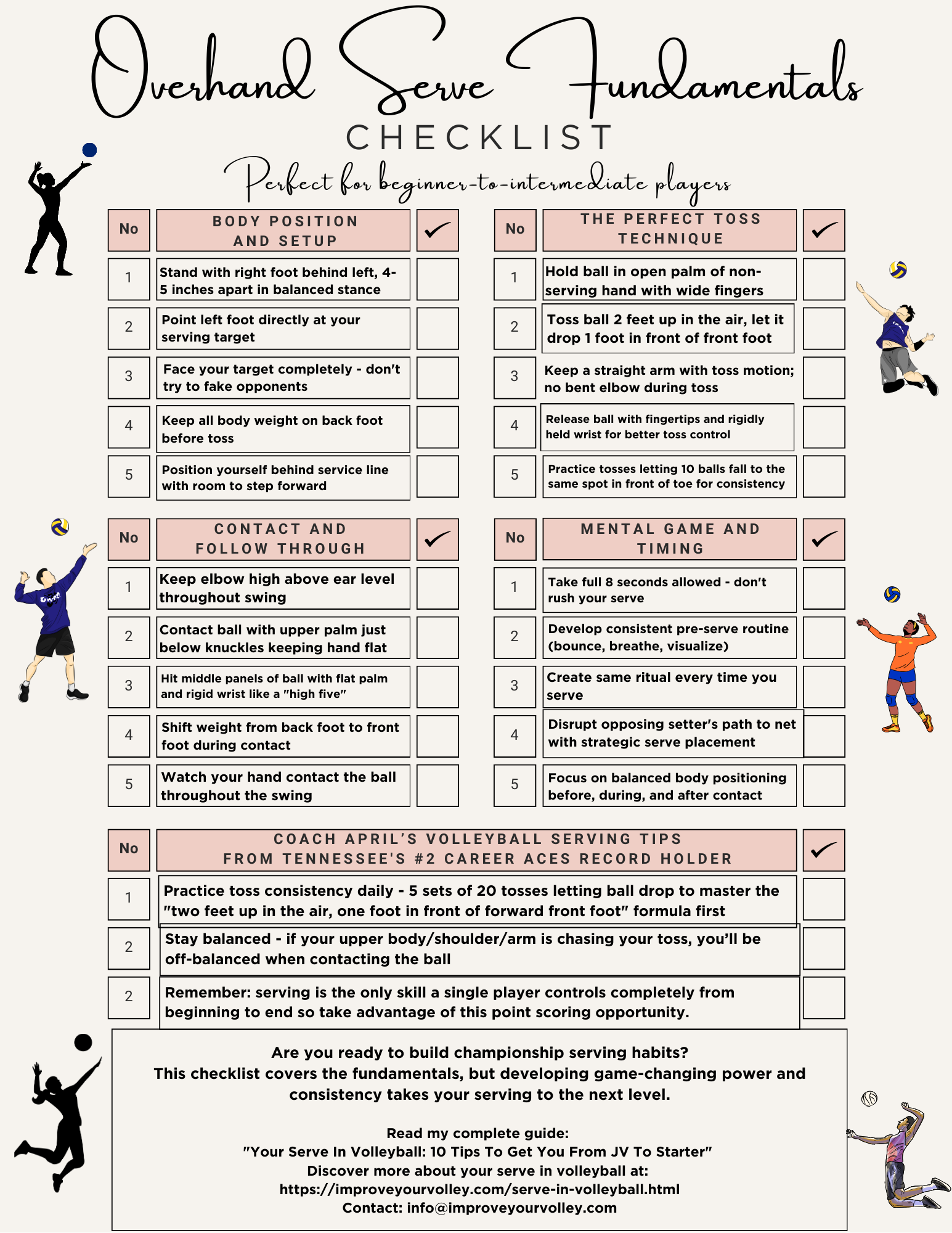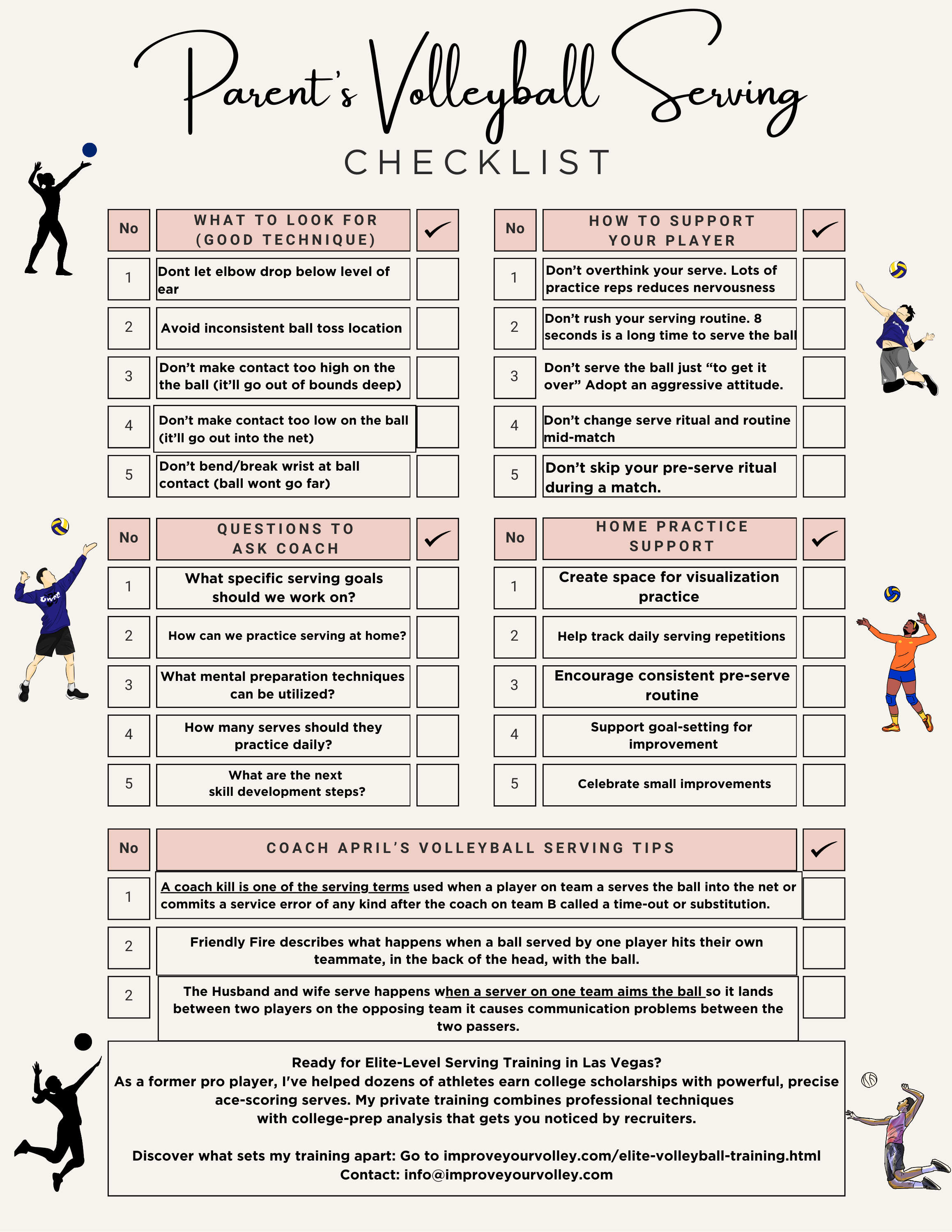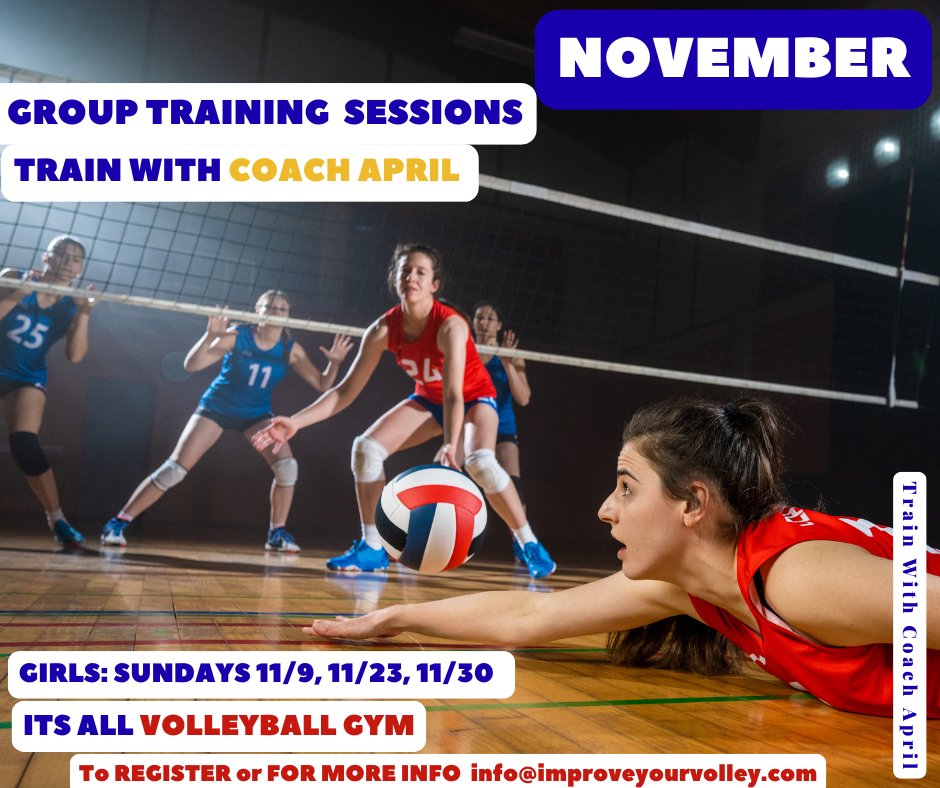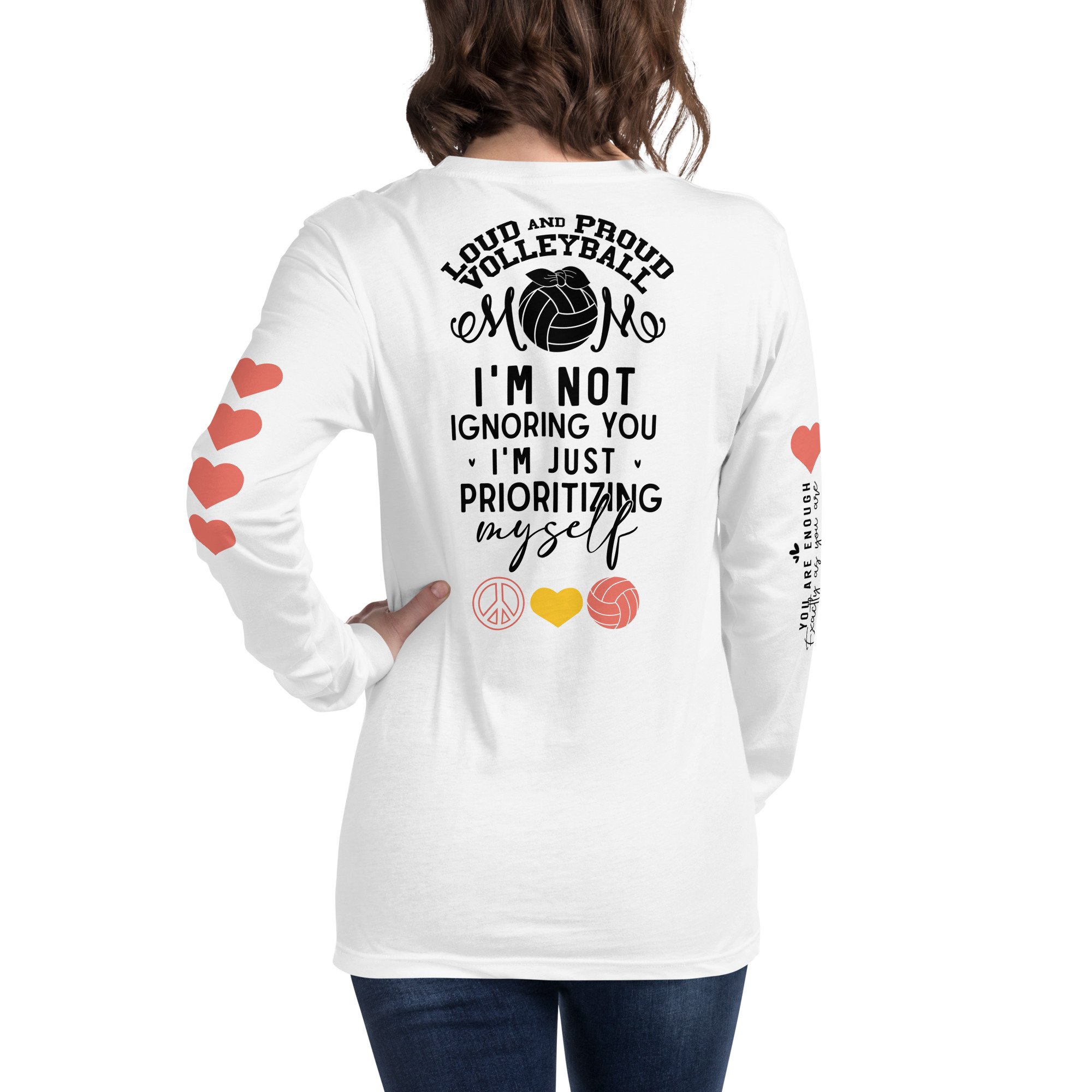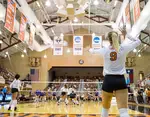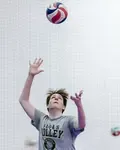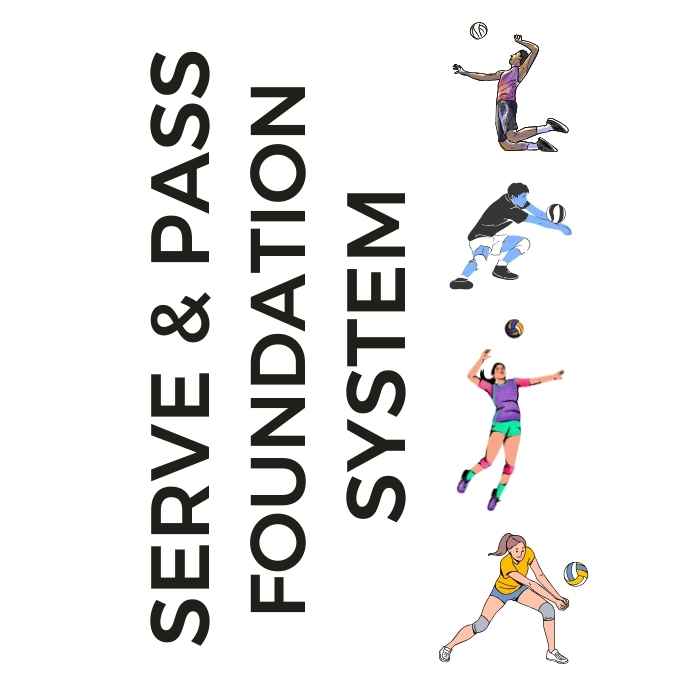
Serve + Pass Foundation System: The Complete Skills Arsenal The two-skill mastery system that transforms inconsistent players into the athletes coaches build their lineups around. Stop Struggling With The Two Most Important Skills In Volleyball!
- Improve Your Volleyball with Coach April
- How To Play Volleyball
- Learn How to Play Ball: A Mom's Guide
Learn How to Play Volleyball: Mom's Guide To Tween Volleyball Success
Volleyball moms, here's the inside scoop on helping your tween excel when watching them learn how to play volleyball in order to support your player's journey
Hey there, volleyball moms!
Coach April here, ready to help you and your tween dive into the exciting world of volleyball.
Whether you're in Utah, California, Texas, Colorado, or right here in Nevada, my guide will help you support your 9-12 year old on their volleyball journey.
Let me break down the basics so you can learn how to play volleyball alongside your budding star!
Proud volleyball mom? Join the sisterhood with these Peace Love Volleyball Mom shirts that celebrate your player's journey.
Learn How to Play Volleyball:
The Basics
Before I jump into the nitty-gritty, let me cover the basics.
Volleyball is a team sport played by two teams of six players on a court divided by a net.
The objective is to send the ball over the net so it hits the ground on the opponent's side while preventing it from touching the ground on your side.
Each team is allowed three touches on their side with the third contact being the last chance to send the ball over the net in an effort to score a point or keep the ball in play. to return the ball over the net.
Learn How to Play Volleyball:
Essential Skills
Now, let's dive into the six fundamental skills your tween needs to conquer to excel at volleyball.
Learn How To Play Volleyball:
The Volleyball Serve
The serve is how each rally starts, making it a crucial skill to master.
Here's what your tween needs to know:
The server stands in Zone 1, the right back area of the court.
- For beginners, an underhand serve is a great starting point.
- As players get better at controlling their body parts which will help them control the ball, they'll want to learn how to do the overhand serve for more power and control.
The serve can be made underhand as a tween player but for high school, club, collegiate and International competition your player will need to know how to overhand serve the ball.
The overhand volleyball serve is made with contact of the ball by a player when they first toss the ball with one hand in the air and contact it with force with the other hand in an effort to get it over the net and possibly score a point
Addi working on her standing floater in volleyball serve down the line.
Focusing on starting with hips open to the wall to her right, a consistent toss and a smooth arm swing when contacting the ball with the middle of her hand to the middle of the ball.
My Pro Tip:
Encourage your tween to practice their serve against a wall at home. It's a great way to improve accuracy!
Give your tween the edge with my beginner skills checklist bundle - the same system I use with my 12-14 year old players
Learn How to Play Volleyball:
Volleyball Passing
(Or Bumping)
Passing is a key skill that players have to do well if they expect to excel at playing volleyball.
Passing, also known as "bumping the ball" is how players receive serves and keep rallies going.
Key points include:
- Create a platform with both arms by holding the wrists together so the inside of the forearms become a passing platform
- By creating a platform with both arms the player will contact the ball deflecting it from their angled platform to the person most responsible for making the second contact on the ball, the setter
- Aim to deflect the ball to the setter, who's responsible for the second contact.
- Good passing requires a stable stance and quick footwork.
My Mom Hack:
Set up a simple passing drill in the backyard. Stand a few feet from your tween and gently toss balls for them to pass back to you.
How Do You Play Volleyball?:
What is Setting?
Here's what your tween should focus on:
- Use fingertips to push the ball up into the air towards the target
- Good setters have soft hands and can place the ball accurately
- Setting requires practice to develop consistency and touch
Fun Fact:
Setters are often called the "quarterbacks" of volleyball due to their crucial role in running the offense.
Watch Izzy set Piper on the right side during private training with me. Piper working on transitioning off the net fast and then accelerating the last two steps of her spike approach which propels her into the air while swinging high and fast to spike the ball.
How Do You Play Volleyball:
Spiking or Hitting
Key aspects include:
- A spike starts with an approach, usually four steps: the first two slow, the last two faster and are used to launch the hitter in the air above the net before taking a swing at the ball
- The goal is to contact the ball at its highest point above the net.
- As players improve, they'll learn to control the direction of their spikes.
Safety First:
Proper spiking technique is crucial to prevent shoulder injuries. Consider getting your tween some professional coaching to ensure they're using the correct form.
Learn How to Play Volleyball: Blocking
Blocking is a key defensive skill used by players in the front row of the team that's serving.
Here's what your tween should know:
- The middle blocker on a lot of teams is the tallest player and moves along the net, in synch with two other front row players, one on the left side of them and one on the right side of them to help stop attacks.
- Timing is crucial when blocking in order to effectively stop the opponent's spike.
- Blockers need to be able to read and anticipate where the setter is going to set the ball and then track the ball so they can be quick on their feet to move into position to attempt to block the hitter who has just been set
Encouragement Tip:
Blocking can be intimidating for new players. Remind your tween that it's okay if they don't block every ball - even professional players don't!
Learn How to Play Volleyball: What Is Digging?
Digging is a defensive skill that keeps rallies alive. It's all about reflexes and determination.
Key points include:
To "dig a ball" you are in a defensive position, most frequently in the back row, or if you aren't blocking in the front row and you are positioned outside of your front row blockers as they jump to block a hard driven ball
How to Dig in Volleyball:
To dig a volleyball up in defense you keep an attacked ball by the opposing team off your court floor by extending your arms and hands under the ball to deflect it back in the air before it hits the floor.
- Players need to get low, below the ball, with extended arms
- The goal is to dig the ball high enough for a teammate to make the next play
- If you are the 'digger" or defender your job is to dig the ball up high enough in the air and ideally to the middle of the court close to the ten foot line, so that the second contact in the rally can be made.
- Good diggers are often the most scrappy and determined players on the court
Motivation Tip:
Celebrate your tween's effort in going for difficult digs, even if they don't succeed every time. It's this never-give-up attitude that makes great volleyball players!
Learn How to Play Volleyball:
Positions on the Court
As your tween learns how to play volleyball, they'll discover different positions on the court. Here's a quick rundown:
1. Setter:
The playmaker who sets up attacks for the hitters.
2. Outside Hitter:
An all-around player who attacks from the left side.
3. Middle Blocker:
Usually the tallest player, responsible for blocking and quick attacks.
4. Opposite Hitter: Attacks from the right side and is often a strong blocker.
5. Libero: A defensive specialist who wears a different colored jersey and plays in the back row.
Encourage your tween to try different positions as they're learning. They might surprise themselves with hidden talents!
Want to support your daughter's development at home? My complete training system gives parents the tools to help between practices.
Learn How to Play Volleyball: Beginner Strategies and Tips
As your tween starts to grasp how to play volleyball, here are some strategies to keep in mind:
1. Communication is key:
Encourage your tween to call for the ball and talk to their teammates.
2. Stay ready:
Teach them to keep their hands up and stay on their toes, ready to move.
At the beginning stages, it's more important to keep the ball in play than to hit it hard.
4. Serve consistently:
A consistent, in-bounds serve is more valuable than a powerful but erratic one.
Common mistakes to watch out for:
- Not moving to the ball
- Hitting the ball with straight arms when passing
- Forgetting to jump when blocking
Learn How to Play Volleyball: Supporting Your Young Athlete
As a volleyball mom, your support is crucial. Here are some ways you can help your tween excel:
1. Encourage practice at home:
Set up a net in the backyard or use a wall for solo practice.
2. Watch volleyball together:
Professional matches can be great learning opportunities.
3. Focus on fun:
At this age, enjoying the game is more important than winning.
4. Praise effort over outcome:
Celebrate hard work and improvement, not just points scored.
Remember, every great volleyball player started as a beginner.
Your tween's journey is just beginning, and with your support, they'll be spiking and digging with the best of them in no time!
Conclusion: Your Tween's Volleyball Adventure Begins!
Learning how to play volleyball is an exciting journey for both you and your tween.
It's a sport that teaches teamwork, perseverance, and the joy of athletic achievement.
As you watch your young athlete grow in skill and confidence, remember that every small step is a victory.
Whether they're serving their first ace or making their first successful dig, these moments are building blocks for a lifetime love of the sport.
So, volleyball moms, are you ready to hit the court with your tween?
With my guide, you're well-equipped to support their volleyball adventure.
Who knows? You might find yourself falling in love with the sport too!
See you on the court!
- Improve Your Volleyball with Coach April
- How To Play Volleyball
- Learn How to Play Ball: A Mom's Guide
If your athlete struggles with consistent serve receive, gets subbed out, or is overlooked for playing time—this is the fix you’ve been looking for.

Struggling with passing consistency?
I help talented passers tired of getting pulled from games because of inconsistent serve receive skills BUILD passing confidence without expensive private lessons using the same 3-step system that's helped dozens of my athletes get recruited.
Download my eBook for $17.99 and start building the passing confidence that keeps you on the court—and gets you seen by college coaches.
From Lady Vol to Legend: Coach April Produces Powerful Passionate Players...is that you?
What Are You Looking For?
Click to Download Your Pre Serving Ritual Mastery Checklist pdf:
🎯Volleyball Pre Serving Ritual Guide -
Players! Learn How To Transform Your Serve from Weak to Weapon
Click to Download Your Parent's Volleyball Serving Checklist pdf
🎯Parent's Volleyball Serving Checklist Guide
Parents! Help Your Player Develop Championship Serves (Even If You've Never Played)

Hi there!
Thanks for stopping by. Hope you learned something today that will help you reach your volleyball goals.
Be sure to subscribe to my email newsletter so you can learn more each week!
Stay strong! Stay motivated!
-Coach April

SUSCRIBE to my email newsletter below!
 Click to learn more about the weekly volleyball classes and clinics or email info@imrpoveyourvolley.com for information
Click to learn more about the weekly volleyball classes and clinics or email info@imrpoveyourvolley.com for informationCongratulations to my seven Boys-18s Vegas Volley club players who played in two state championship finals yesterday, the 3A and 5A State champinship finals at Sunrise Mountain High School.
TOURNAMENT CHAMPIONS!
A-1 Vegas Volley VBC
In It To Win It Tournament
May 2 - 4, 2025 Tournament
Gold Medalists
18s Premier Division
Vegas Volleyball's Unsung Heroes: Celebrating Moms with Peace Love Volleyball Shirts
Ready to energize your volleyball mom journey?
Subscribe to my 'Producing Powerful Passionate Peaceful Players' email list above on ImproveYourVolley.com.
You'll receive energy-boosting tips, exclusive insights from me, Coach April Chapple on maintaining momentum in volleyball.
Let's power up the Vegas volleyball scene together!
Recent Articles
-
5 Essential Serving Tips from Tennessee's #2 Career Aces Record Holder
Dec 09, 25 11:39 PM
I've identified the 5 essential serving tips that separate confident servers from struggling ones and you'll serve with the confidence that creates aces -
The Volleyball Toss How Consistent Is Your Ball Toss Before You Serve?
Dec 07, 25 12:29 AM
The volleyball toss for the overhand serve needs to consistently be two feet up in the air and one foot in front of front foot which puts the ball in front of your serving arm. -
Shop Small: Real Volleyball Training With + Results From A Real Coach
Dec 03, 25 10:30 AM
Support a woman-owned business. Get training from a former elite pro with 13+ years coaching experience. Ditch the big box store--invest in proven results.
